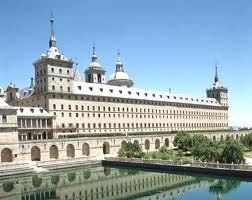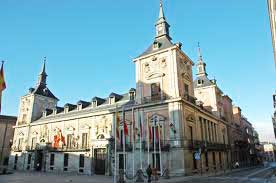Baroque Architecture
The reign of Felipe II coincided with the highest point in the fortunes of the Spanish Empire, on the rise ever since the discovery of the New World, back in 1492. Internally, many were the changes undergone in the social sphere, as the prudent king chose to move the court from the historical capital, Toledo, to Madrid, and to embark on the construction of El Escorial, which would launch Juan de Herrera, its architect, into fame and would put the country on the threshold of Baroque architecture.

Built between 1563 and 1584, El Escorial was a project of such ambition and projection that, once finished, it set the rules for creative activity in the Empire for the foreseeable future. It was the beginning of what has come to be known as Herrerism, a style determined and defined by the austere look of the monastery-cum-palace.
Among the followers of Juan de Herrera's style one prominent representative is Francisco de Mora, whose early training got him involved in the construction of El Escorial. Although he worked primarily in Madrid, his first monumental project was carried out in Uclés, home base of the Order of Santiago. He was involved in constructions at the monastery for over 20 years, including the erection of its church, its western facade and its funeral chapel.
Nevertheless, Francisco de Mora is most famous for his work at the town or Lerma, where the Duke appointed him for the development of an urban space. As well as several churches, he was in charge of erecting the Ducal Palace, a landmark of Spanish Baroque architecture. Cast from the same mold as El Escorial, Mora's creation exudes the same sense of rigid elegance with a flurry of right angles, flat walls decorated only with heraldic crests and protruding towers in each of the corners, crowned with Flemish spires.
It would be precisely Francisco de Mora's nephew, Juan de Mora, who would carry out many of the projects involved in the enhancing and development of Madrid as the capital of the kingdom, once Felipe III ordered the court to return from Valladolid, in 1606. One such project was the completion of the city's main square, the Plaza Mayor, which he embarked upon in 1617. Two years later, the square was finished, largely following the style and design of Juan de Herrera.
The Capital
If you're strolling through the city one day, however, you have a much better chance to experience and appreciate the work of Juan de Mora if you cross Sol and continue through the Calle Mayor, which leads to the Casa de la Villa, former venue of the City Council. The Casa de la Villa is an excellent sample of the evolutioned style of Juan de Herrera, with a similar layout but a less rigid whole.

The end of the XVI and beginning of the XVII centuries saw Madrid develop as a real city and therefore much of the early Baroque architecture produced in the kingdom at the time was done in the capital. Among the many churches that were erected during this time, the Collegiate of St Isidore bears special mention.
Conceived by the Jesuit priest Pedro Sánches, the Collegiate served for many years as the cathedral of the city, before the completion the Cathedral of La Almudena in 1993. Like all Jesuit architecture it follows the norms of the church off the Gesù in Rome, with a single nave with chapels on either side. The crossing of the church is crowned with a cupola, designed by Francisco Bautista.
Meanwhile, as the administrative centre of the kingdom became larger, the need arose to build a palace where the King, by now Felipe IV, would be able to seek solace without being too far removed from Madrid. Thus it was decided that a recreational facility should be erected just on the outskirts of the city. That was the germ that gave rise to the Palace of El Buen Retiro, presently almost completely extinct, bar the gardens.
Like most Baroque architecture in Spain, the palace had certain aesthetic resemblance to the monastery of El Escorial, especially in the almost military outlook of its buildings, laid out in a square with towers on the corners topped with Flemish spires. Designed by Alonso Carbonel, El Buen Retiro remained a recreational, not a contemplative, retreat though, and was fittingly equipped with large open spaces and ornate gardens that, to this day give Madrid its very own character.
